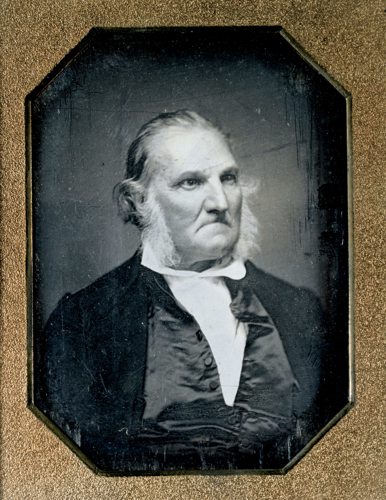- Events & Programs Home
- Calendar
- Accessibility
- Adults
-
Families & Teens
- Families & Teens Home
- 10x10 Teen Art Expo
- Art on the Rise
- Art Together: Art Making for Families with Children Ages 3–5
- Babies Sing with May Festival Minis
- Boy Scouts / Girl Scouts
- CAM Kids Day
- Family Storytime and Gallery Walk
- Family Studio: Art Making for Families with Children Ages 6–12
- Games in the Galleries
- Members-Only Baby Tours
- Public Baby Tours
- REC Reads
- Rosenthal Education Center (REC)
- Saturday Morning Art Class
- See Play Learn Kits
- Summer Camp
- Teen Fest: Zine and Comic Exchange
- RECreate
- Teachers
- Community Outreach
- Fundraisers
- Plan Your Own Event

- Events & Programs Home
- Calendar
- Accessibility
- Adults
-
Families & Teens
- Families & Teens Home
- 10x10 Teen Art Expo
- Art on the Rise
- Art Together: Art Making for Families with Children Ages 3–5
- Babies Sing with May Festival Minis
- Boy Scouts / Girl Scouts
- CAM Kids Day
- Family Storytime and Gallery Walk
- Family Studio: Art Making for Families with Children Ages 6–12
- Games in the Galleries
- Members-Only Baby Tours
- Public Baby Tours
- REC Reads
- Rosenthal Education Center (REC)
- Saturday Morning Art Class
- See Play Learn Kits
- Summer Camp
- Teen Fest: Zine and Comic Exchange
- RECreate
- Teachers
- Community Outreach
- Fundraisers
- Plan Your Own Event
Blog: CAM Uncovered
Blog: CAM Uncovered
- Home
- Plan Your Visit
- Art
-
Events & Programs
- Events & Programs Home
- Calendar
- Accessibility
- Adults
-
Families & Teens
- Families & Teens Home
- 10x10 Teen Art Expo
- Art on the Rise
- Art Together: Art Making for Families with Children Ages 3–5
- Babies Sing with May Festival Minis
- Boy Scouts / Girl Scouts
- CAM Kids Day
- Family Storytime and Gallery Walk
- Family Studio: Art Making for Families with Children Ages 6–12
- Games in the Galleries
- Members-Only Baby Tours
- Public Baby Tours
- REC Reads
- Rosenthal Education Center (REC)
- Saturday Morning Art Class
- See Play Learn Kits
- Summer Camp
- Teen Fest: Zine and Comic Exchange
- RECreate
- Teachers
- Community Outreach
- Fundraisers
- Plan Your Own Event
- Give & Join
- About
- Tickets
- Calendar
- Exhibitions
- Collections
- Blog
- Shop
Singular Portrait: John James Audubon by photographer Mathew Brady
by Emily Bauman
10/11/2017
curatorial , portrait , John James Audubon , photography , daguerreotypye
When I was a child, I was uninterested in portraits. I came to the art museum looking for Art Deco metal work and magical turn-of-the-century landscapes – for the ten-year-old me, portraits were the stuff of a stuffy elite. Depictions of stern-faced sitters seemed devoid of imagination, bound in a distant past.
In light of this admittedly limited childhood perspective, it’s funny that one of the photographs I most enjoy in the museum collection is a daguerreotype portrait of John James Audubon (1785–1851). A naturalist, ornithologist, and wildlife painter, Audubon is best known for his Birds of America, a masterful publication illustrated with 435 oversized, hand-colored engravings based on his nature studies. He lived in Cincinnati for a short time before 1820.
We see Audubon depicted from the waist up, wearing a vest and suitcoat. The collar of his shirt flares out under his chin, his white side-whiskers puff out from his face. He faces the camera at a three-quarters profile, his eyes focused somewhere beyond the frame. His gaze is sharp, and his long, straight nose is prominent over the down-turned arc of his closed mouth. It’s hard to resist the temptation to liken his countenance to that of the birds he studied so ardently.

Made by the seminal American photographer Mathew Brady (1822–1896), this daguerreotype is thought to be the only remaining photograph of Audubon made from life. Brady is best known today for taking and circulating haunting photographs of the Civil War, but he was also a leading portraitist. It’s likely that he made this picture of Audubon for his Gallery of Illustrious Americans, a suite of 24 biographical sketches of eminent public figures, illustrated with lithographs – reproducible prints – made after original daguerreotypes.
Despite my childhood disdain for “serious” portraits, I keep coming back to this depiction of Audubon. There’s a presence about it – almost as if I could see life in his eyes. And in a way, it makes the past seem not so distant at all.
Image credit: Mathew Brady (American, 1822–1896), John James Audubon, ca. 1847–1848, daguerreotype, image 4 1/4 x 3 1/4 in., Cincinnati Art Museum; Centennial Gift of Mr. and Mrs. Frank Shaffer, Jr., 1981.144
Cincinnati, OH 45202
Toll Free: 1 (877) 472-4226
Museum Hours
Museum Shop
Terrace Café
Library
Cincinnati Art Museum is supported by the tens of thousands of people who give generously to the annual ArtsWave Campaign, the region's primary source for arts funding.

Free general admission to the Cincinnati Art Museum is made possible by a gift from the Rosenthal Family Foundation. Exhibition pricing may vary. Parking at the Cincinnati Art Museum is free.
Generous support for our extended Thursday hours is provided by Art Bridges Foundation’s Access for All program.

General operating support provided by:



